22 August 2006 – 21 September 2006
The Islamic Arts Museum Malaysia brings forth a new exhibition of balance, harmony and opposites through the use of fantastic colours and materials by abstract material painter Riccardo Natali.
In his own words: Equilibrium
The exhibition is called Equilibrium because my work is based on the quest for balance, which through the use of colours and shapes allows me to blend opposing forces.
These forces collide and annihilate one another in a continuous interplay of opposite poles, tending to reach stability, calm, harmony, and balance. This is as in a storm - the phenomenon of nature most resembling my thought. When a storm breaks, it brews and draws nearer in utter chaos - a whirl of unprecedented, devastating violence. In the centre, instead, the balance between the opposing forces is achieved and a sublime, complete calm reigns.
The image of the storm fits perfectly with human nature. The history of man is the story of an endless search for balance between opposites: passions, ambitions, desires, paths of life. In ancient Chinese philosophy (especially in Taoism) the essential categories of existence are Yin and Yang, at the same time conflicting and complementary.
The Yin represents the feminine principle, passive and dark, whereas the Yang symbolises the masculine principle, active and bright. Their point of contact is imperceptible and elusive; it can only be sensed, felt, but the next instant it may already have vanished.
From time immemorial man has been driven, for good or evil, to try to find answers. This craving for knowledge inevitably breeds further questions. Right in the lapse between one question and the next, the very answers represent, even for an instant, intense and fleeting alike, the moment of quiet and balance.
I would like to add a note about gypsum, the noble material that enables me to create my works. The main feature of plaster is being a material that only allows the artist a limited time for moulding. The space of time between the cast and the setting is so short that the artist is forced to use his instinct and creativity rather than a technique developed over a long period of years.
Colours are also of primary importance. Shades, the slow, gradual turning of a hue into a new one, symbolise the multifaceted quality of our moods, the progression of our experiences, our evolving, the complexities of our thought, the knowledge of our actions. All of these facets are saturated into one form in which they express themselves and at the same time all of our contradictions are wiped out. Shades and nuances of colour blend with the textures of plaster, merge into its plastic ribs, to attain the primordial energy of creation.
When an observer stands before a painting and shifts from one of its sides to another, he can usually notice that the same image takes on different, often even contrasting, hues depending on his point of view, retaining yet as a whole coherence, harmony and balance.
Riccardo Natali
Biography of Mr. Natali:
Riccardo Natali was born on July 9, 1954 and is a native of Florence where he continues to live and work. He is a self-taught artist painting for the last 25 years. The main elements used in his work are plaster and colour pigments. An unusual and innovative technique that gives a low to medium relief effect, to his work. He has participated in varied exhibitions but prefers to work for private collections.



